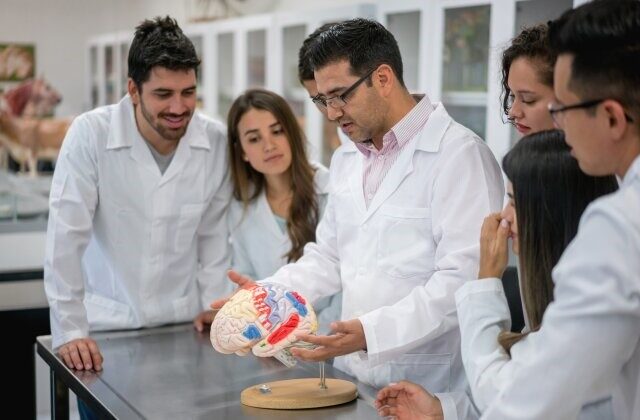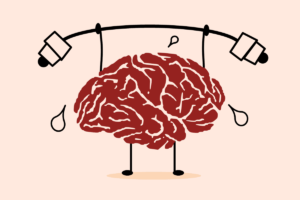
Making Learning Environments Better with Cognitive Science
Evolution of Education: the Need for Cognitive Science
From the Red Queen hypothesis, entities are to continually evolve to avoid extinction. Permit us to apply this to education as well, okay? As education is important in shaping individuals’ intellectual, social and emotional development, it must continually evolve. For education to remain relevant in society, we must discern how learning and recall happen, and know how to improve them. This is cognitive science in a nutshell!
So, hey, let’s take an imaginative stroll: the battle between the greatest wrestlers of all time. That’d be a tough one, right? In the same vein, cognitive science enables us to challenge our norms in education. Challenging ideologies we have known, and come to see as the best, is a grave battle; and to evolve, we plus cognitive science must come on top. By continually challenging some common aspects of teaching practice, we pave new paths to more effective education.

More on Cognitive Science?
Cognitive science is the study of the human brain to understand the mental processes and different knowledge systems and their mental representations to produce intelligent behaviour. Simply put, it is the study of how people think and learn. Cognitive scientists investigate topics like perception, memory and attention; language processing; problem-solving; decision-making and reasoning; learning how to learn, and designing intelligent machines that can act on the world around them.
In addition, cognitive science can be seen as an active process that involves constructing meaning and connecting new knowledge to prior knowledge. According to researchers, there are numerous aspects of human cognition, including attention span, memory, decision-making patterns, visual perception and speech perception. All these might seem vast, but shouldn’t it? The human mind can be seen as one of the complexities of the whole universe. Understanding and applying cognition (an aspect of the human mind) is what cognitive science focuses on. This would go a long way in the development of education.

What about Learning Environments?
A learning environment is a place where students can learn, grow and thrive. This could be at school, college or university, or even at home. A positive learning environment will help people gain the knowledge and skills that they need to succeed in life. Learning spaces should be designed to cater for student learning in all its forms. Cognitive science helps with this goal by creating these designs, and even improving already-made designs.
Advancing Learning Environments with Cognitive Science
Cognitive science is concerned with cognition. Learning environments and cognition are interrelated: cognition (or better still, cognitive science) is needed in developing effective learning environments, and conversely, learning environments contribute to cognitive development. Various teaching and learning methods have been drafted due to cognitive science; read on to find out!
Read more about how learning environments affect cognition here
1). Retrieval Practice
One learning method proven effective by cognitive science is retrieval practice. It is an act of actively recalling information from memory. Research has shown that retrieval practice is more effective for long-term retention than a passive review: reading and trying to recall over and over again would help more in remembering things than just glancing through your notes (The importance of hard work strikes again!). Indeed, retrieval practice helps strengthen schema that students have built, helping them commit the information in their long-term memory (almost never forgetting it!).
Enough of the students! The educators and teachers can also incorporate retrieval practice into their teaching, making learning more effective. This can be done by asking students to answer questions, to make flashcards and concept maps, to compete in quizzes; or engaging them in other activities that will require them to recall information. All thanks to cognitive science, won’t you say?
2). Spaced Learning
Spaced learning means distributing learning activities over time, rather than students cramming them into a single study session. Research (in cognitive science, of course) shows that this has been very helpful and is more effective for long-term retention than mass learning. Providing students with opportunities to review their study materials over time, rather than learning all in a sitting, would be a good way of improving learning environments. This would reduce brain drain seen in many schools where this practice is ignored. One way to incorporate spaced learning would involve organizing study charts that will break each topic into sessions; that would let the students breathe, right?

3). Personal Engagements
Another way of improving learning environments is by encouraging personal engagements. Through cognitive science, we have come to see that by dividing students into groups for discussions, group study, brainstorming sessions and reflections, learning can become better. This indeed broadens the scope of learning.
Also, students can even be picked on a random basis to teach the whole class. They can share what they know about a course during tutorial sessions. This makes the students more involved, making it less likely for what is learnt to slip away. And maybe, just maybe, we wouldn’t have come to know this without thinking about how learning was and how to improve it; think about that!
4). Visual Learning
Through cognitive science, we have come to see that visual representation provides a powerful means of summarizing and presenting data in a way that most people find easier to comprehend. There should be more pictorial images in students’ study materials. This enables them to store information easily without cramming words – just the remembrance of the pictures during examinations will enable the student to answer the questions very well. Remember the common saying:
One picture is worth a thousand words
Fred R. Barnard
Could that have been cognitive science speaking through our dear friend, Fred? Well….
Finally…
Remember! Extinction comes when evolution is thrown out the window. Learning environments can improve drastically if thought is given to how learning is now, and how learning can be improved. Say hello to cognitive science, the tool needed to provide valuable insights into how learners process and retain information, and perhaps the best ways to advance these methods. By the use of this knowledge, educators can create effective learning environments that optimize instructional methods, and personalize learning experiences, and visual learning. Integrating cognitive science principles into educational practices can lead to enhanced learning outcomes, increased retention, and improved student engagement. Therefore, throw rigidity out the window and welcome cognitive science through the door!
Written by Boluwatife
For the Editorial Team, God Is Love Educational Foundation




